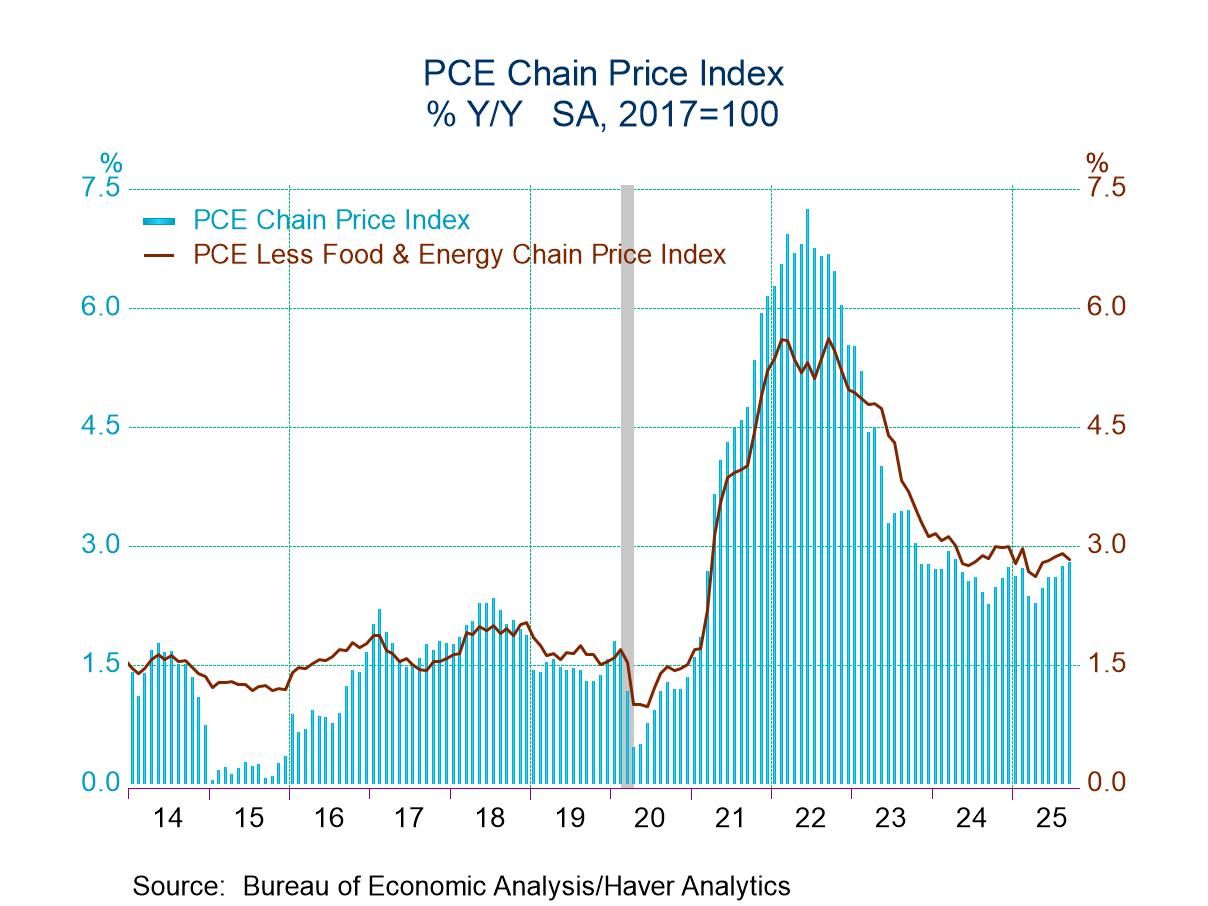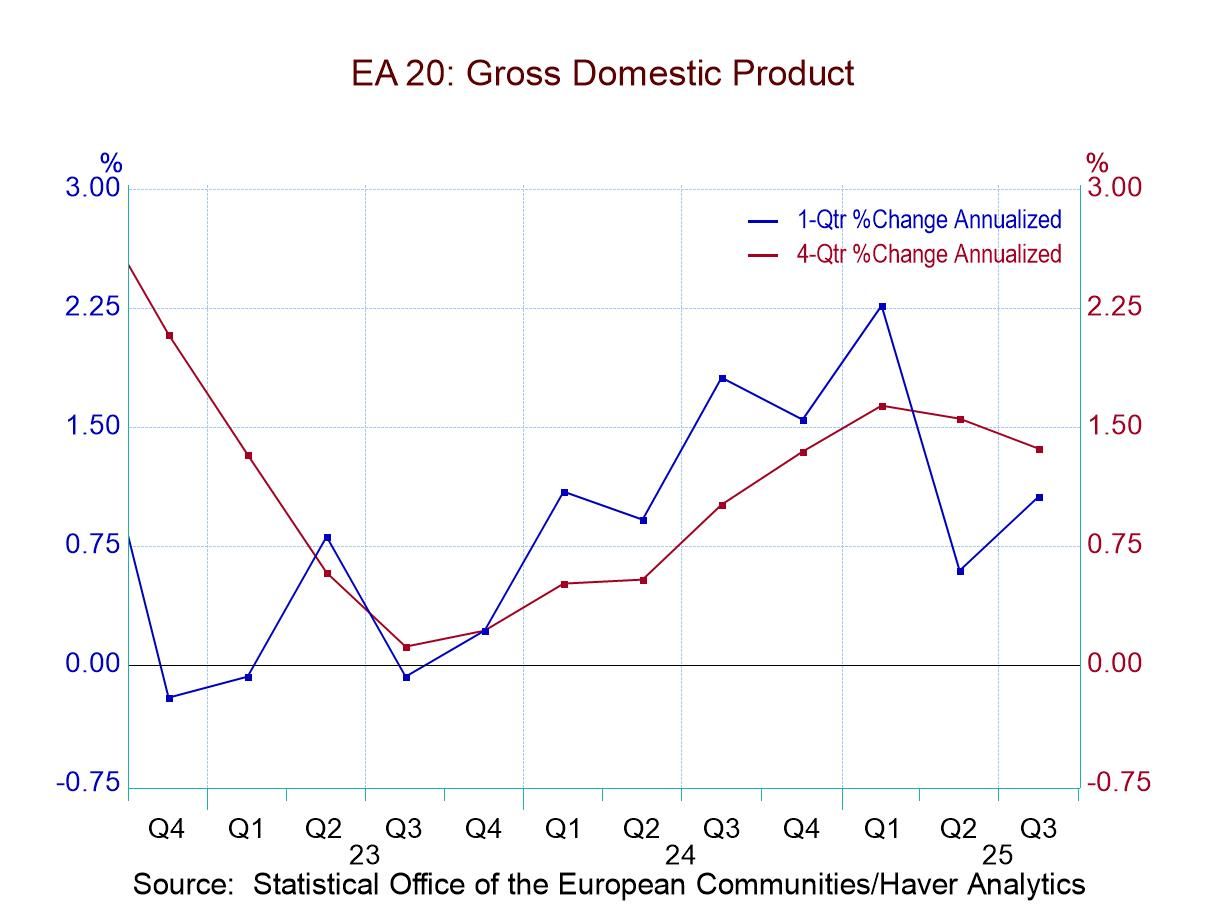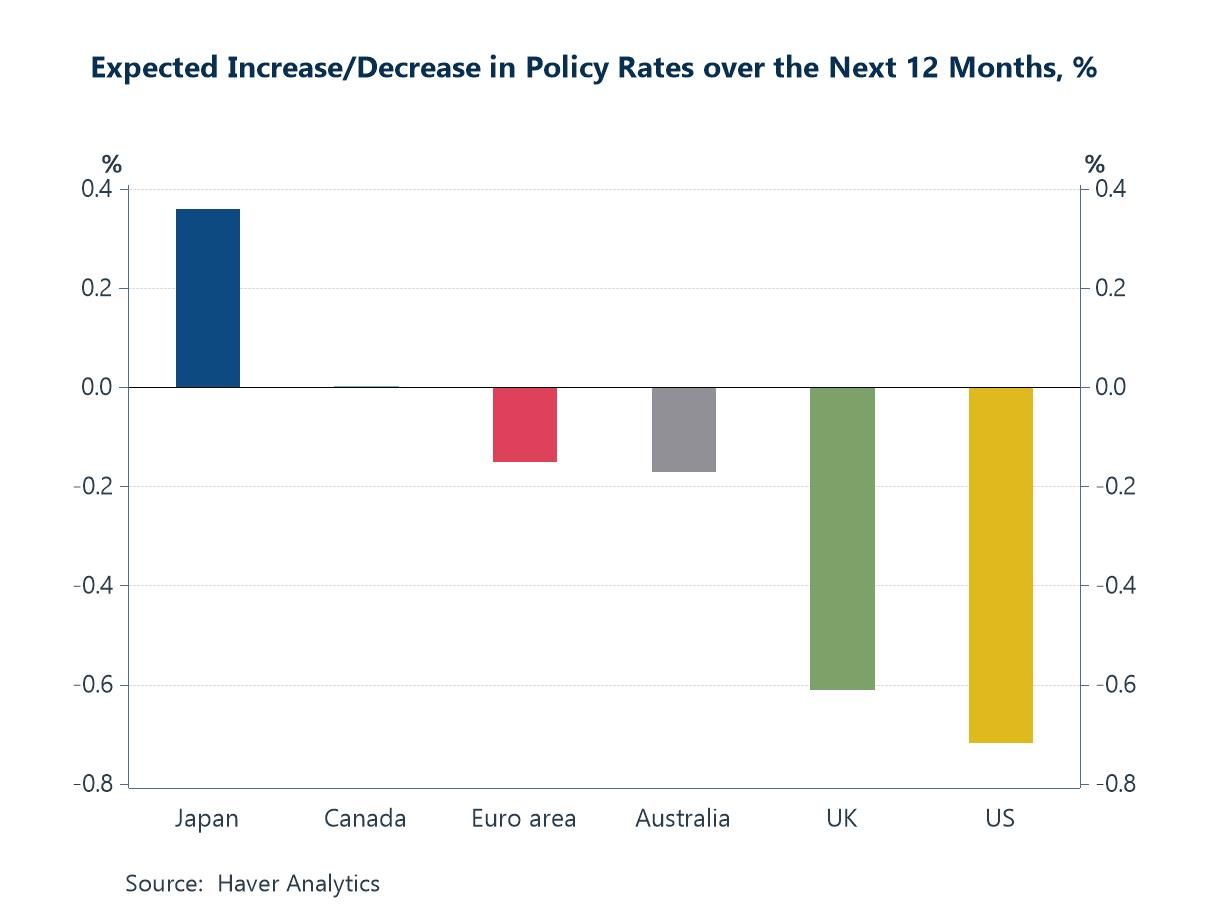Japan’s Economy Watchers Reading Is Increasingly Narrow Range

The current and future economy watchers indexes advanced in June. In the current index, only services, housing, and employment readings weakened. In the future index, the reading for corporations weakened based on weakness for nonmanufacturing corporations. However, the improvement signaled is still quite downbeat since it only indicates that the ongoing deterioration is slower. The diffusion readings continue to be below 50, indicating pullbacks across all categories are still in train and are only letting up slightly.
While the improvements in the month-to-month readings were widespread, they were mostly small and no reading in either the current or the future survey has a diffusion value above 50%. That means that all these economy watcher readings are actually showing deterioration although on the month the rate of deterioration slowed across most category readings. In fact, there are no month-to-month readings at or above 50 in either the current or future survey in the last three months. To get a category reading of 50 or higher, we must go back to February when the reading for future employment was 50. We go back to August 2024 to find a majority of future sector reading at 50 or higher and to March 2024 to get a majority of current readings above 50.
The far-right hand column assesses the level of the June diffusion readings vs. past readings back to 2002. On that 23-year timeline, all the current and future readings have percentile standings below the 50% mark leaving all of them below their respective median readings for the period.
In the current survey, retailing and nonmanufacturers with diffusion percentile standings in their respective 41st percentiles have the strongest queue readings. The weakest reading in the current survey are the 21st percentile standings for housing and for employment.
For the future survey percentile readings, the strongest is a 45.5 percentile standing for eating and drinking places. The weakest future reading is the 24.5 percentile reading for employment.
Seeing such weakness in the current and future indexes in employment a reading that is a lynchpin for all sectors is clearly not reassuring.
At the bottom of the table, there are collected results for monthly data on month-to-month changes on the breadth of improvement. We see monthly that after a poor performance in April with most reporting categories worsening, May and June show most of them improving month-to-month on the order of 70% to 100%. Similar metrics for three-month and six-month changes perform much worse. These calculations are executed on changes in averages the twelve-month and average six-month and average 3-month data. On those comparisons, we see average diffusion is up broadly over 12 months compared to 12-months earlier. But the averages over six months and over three months are showing declines across all categories.
While the monthly data are showing some month-to-month improvement, the broader data show that the pace of improvement linked to broad averages is still not in place. And it is still a nefarious since of ‘improvement’ for the overall readings in which the diffusion data are only signaling that the categories are getting worse at a slower pace. Japan continues to struggle with weakness as the Bank of Japan wrestles with inflation and the United States and Japan spar over tariffs.

Robert Brusca
AuthorMore in Author Profile »Robert A. Brusca is Chief Economist of Fact and Opinion Economics, a consulting firm he founded in Manhattan. He has been an economist on Wall Street for over 25 years. He has visited central banking and large institutional clients in over 30 countries in his career as an economist. Mr. Brusca was a Divisional Research Chief at the Federal Reserve Bank of NY (Chief of the International Financial markets Division), a Fed Watcher at Irving Trust and Chief Economist at Nikko Securities International. He is widely quoted and appears in various media. Mr. Brusca holds an MA and Ph.D. in economics from Michigan State University and a BA in Economics from the University of Michigan. His research pursues his strong interests in non aligned policy economics as well as international economics. FAO Economics’ research targets investors to assist them in making better investment decisions in stocks, bonds and in a variety of international assets. The company does not manage money and has no conflicts in giving economic advice.






 Global
Global